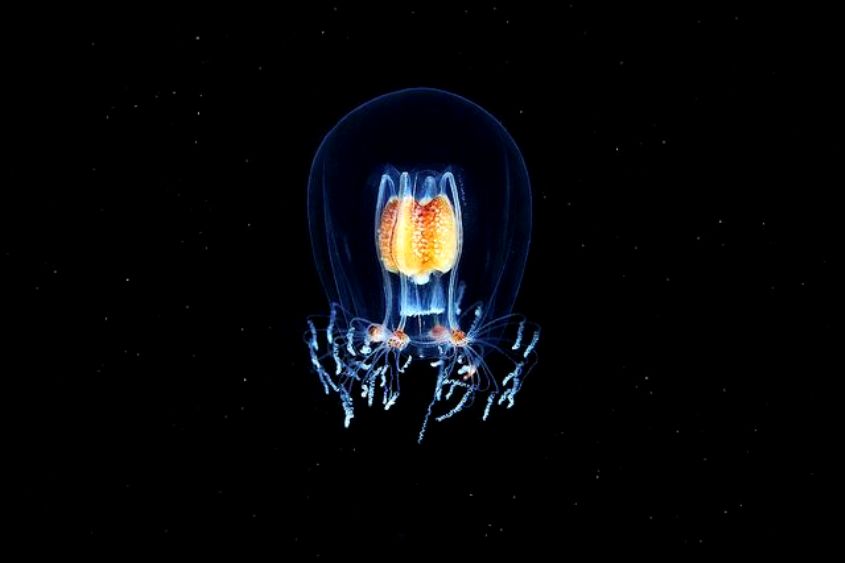
The Morbidly Fascinating Page
This Month: Frightening Deep Sea Creatures

Picture credit HERE and from Insider and Britannica
Creatures from the bottom of the ocean that will give you nightmares
Deep-sea fish, in general, any species of fishes (class Osteichthyes) that are found at extreme ocean depths, usually more than 600 m and even to as much as 8,370 m (that is, about 2,000 to 27,500 feet). Mid-water species, which represent more than a dozen families of marine fishes, are characterized by huge mouths, enlarged eyes, and the presence of luminous organs on some or several parts of the body. The light-producing organs serve to attract either prey or potential mates. These and other peculiar traits of deep-sea fishes represent evolutionary adaptations to the extreme pressure, cold, and particularly the darkness of their environment. The fish life of the deep-sea habitat is among the most specialized of any habitat in the world.
From frightful fangtooth fish and vampire squid to coffinfish and spiky, sinister sea urchins, plenty of strange and scary creatures lurk in the dark, cold depths of the ocean ... Be brave and dive on in!
REGULAR ANGLER FISH
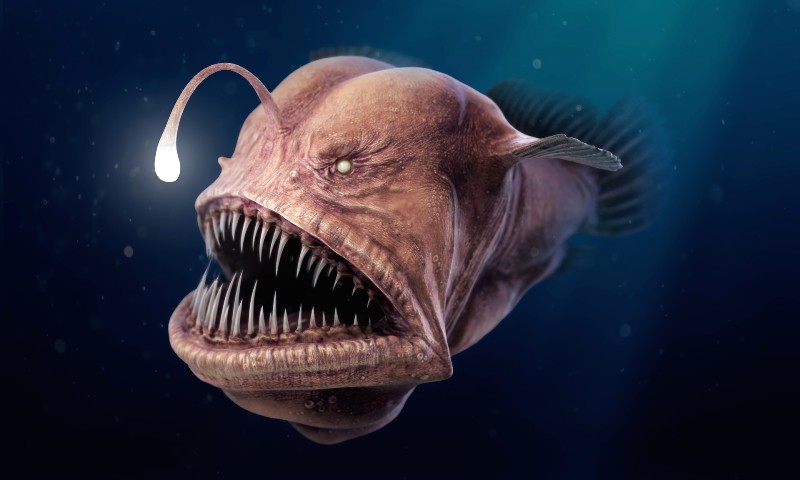
HAIRY ANGLER FISH
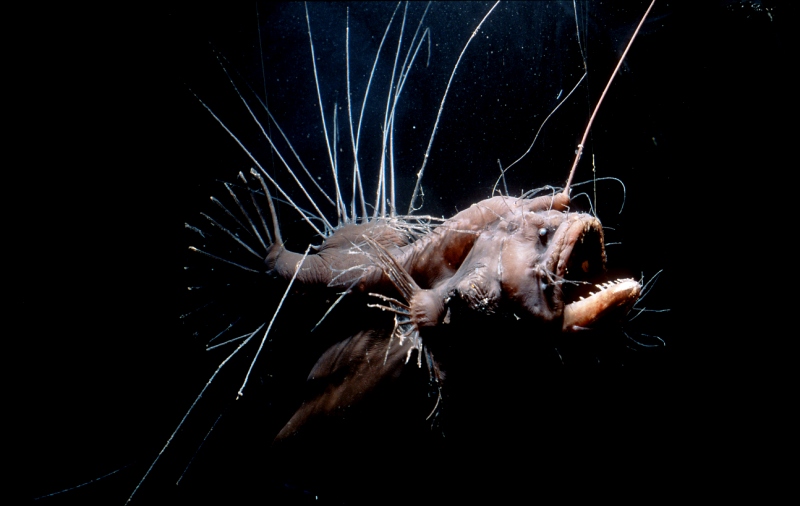
The anglerfish is most famous for the bioluminescent growth on its head, which lures prey to its death.
The anglerfish, possibly one of the world's ugliest creatures, is most famous for the bioluminescent growth on its head, which lures prey to its death at the the lightless bottom of the ocean.
However, there are more than 200 species of anglerfish, divided into four groups: goosefish, batfish, frogfish, and deep-sea angler. Only females possess the iconic, bioluminescent angling apparatus. Most live at the bottom of the Atlantic and Antarctic Oceans, sometimes as far as a mile below the surface.
VAMPIRE SQUID
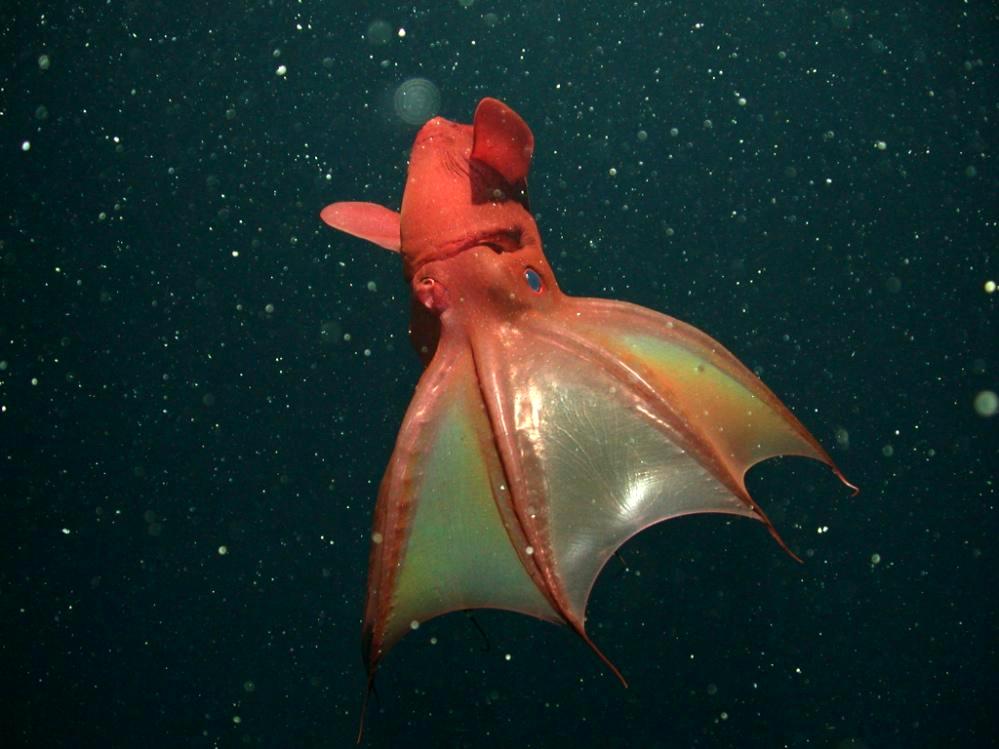
The vampire squid's scientific name, Vampyroteuthis infernalis, means "vampire squid from hell."
In Latin, the name of this cephalopod — which is neither a squid nor an octopus — is even more sinister. Its scientific name, Vampyroteuthis infernalis means "vampire squid from Hell."
But the vampire squid, found in the inky depths of the mesopelagic zone (about 3,300 feet below the ocean's surface), is gentler than its appellation indicates. Unlike its namesake, it doesn't feed on blood. Instead, this creature subsists on "marine snow," decaying organic material that falls to the ocean floor — kind of like the dead leaves that litter forests.
SARCASTIC FRINGEHEAD
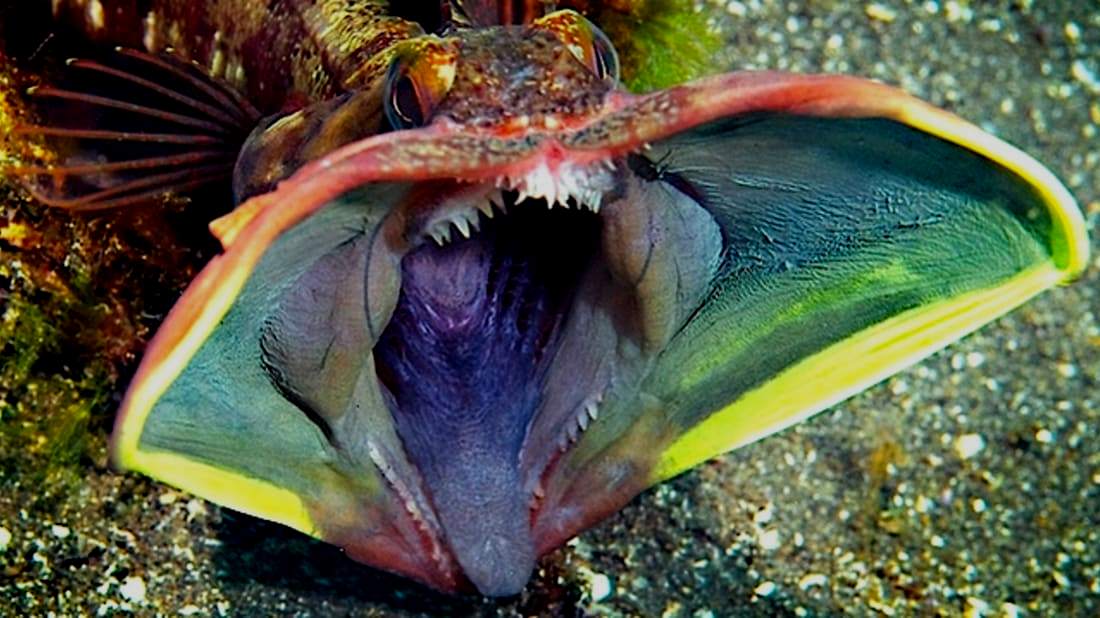
The sarcastic fringehead is a tube blenny, a fish that burrows in narrow structures created by other creatures.
Where did this colorful title come from, you might ask? While “sarcastic” is often used to describe one’s humor, the word originates from the Greek sarkasmós, which means to bite or tear. Native to the northeast Pacific Ocean near California and Baja California, the sarcastic fringehead is a kind of tube blenny, a type of small fish that burrows in tube-like structures created by other creatures.
Sarcastic fringeheads primarily gorge on squid eggs, but scientists believe that the males' oversized mouths may impede upon their ability to feed.
FACELESS CUSK EEL
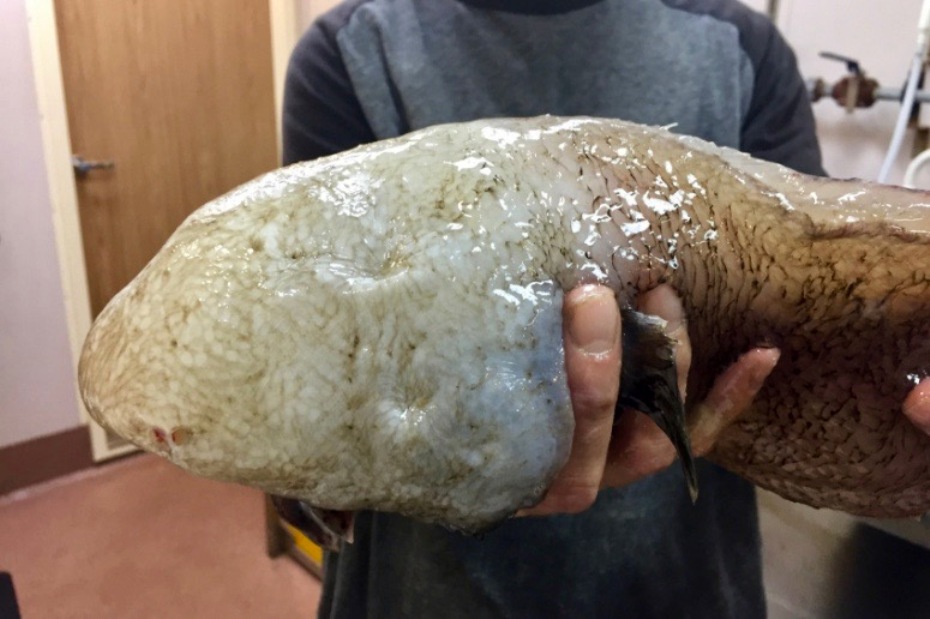
As the name suggests, the faceless cusk eel has no face.
Almost four years ago, Australian researchers found a faceless cusk an incredible 13,000 feet below the water's surface. Expedition leader Dr. Tim O'Hara of Australia's Museums Victoria said,"It looks like two rear ends on a fish, really."
Apparently its mouth sits underneath the rest of its body, and is protrusible, meaning it extends to catch food, and then disappears back inside of its own body.
FRILLED SHARK
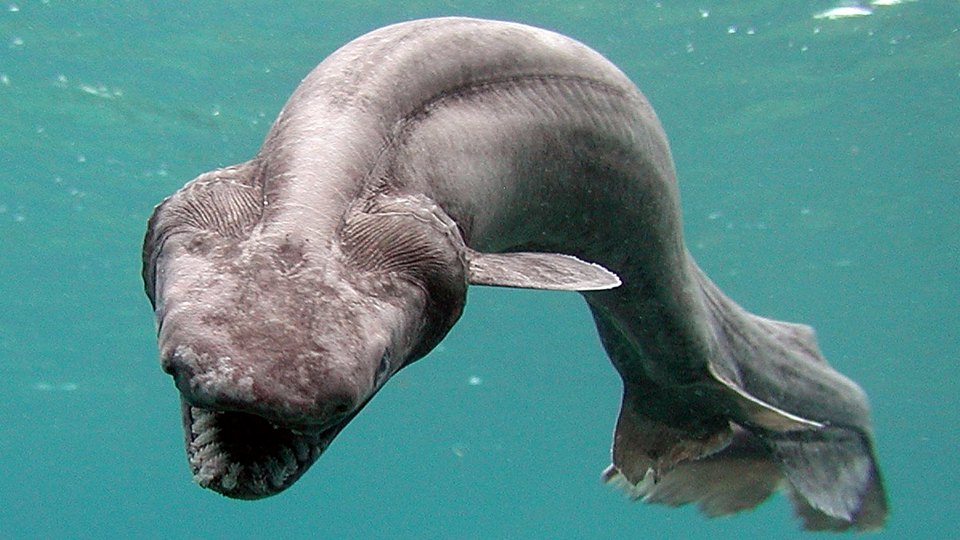
The frilled shark is a "living fossil" — a species that has retained some of the features of its primitive ancestors.
With its grisly appearance, the frilled shark is an example of a living fossil, an animal whose appearance has not evolved much through the millennia. The term can also apply to creatures that have few or no close surviving relatives.
What's most unusual about this prehistoric-looking predator, which is endemic to both the Atlantic and Pacific Oceans, is the way it reproduces. In other mammal species, embryos are nourished via a placenta. However, frilled shark embryos obtain energy from yolk sacs and mothers only give birth once their offspring are capable of surviving on their own.
Growing upto 7 feet long, frilled sharks primarily prey on squid. They've also been known to feed on fish — and even other sharks.
BARRELEYE (In this photo, the eyes have rotated to the top of its head, which is see-through)
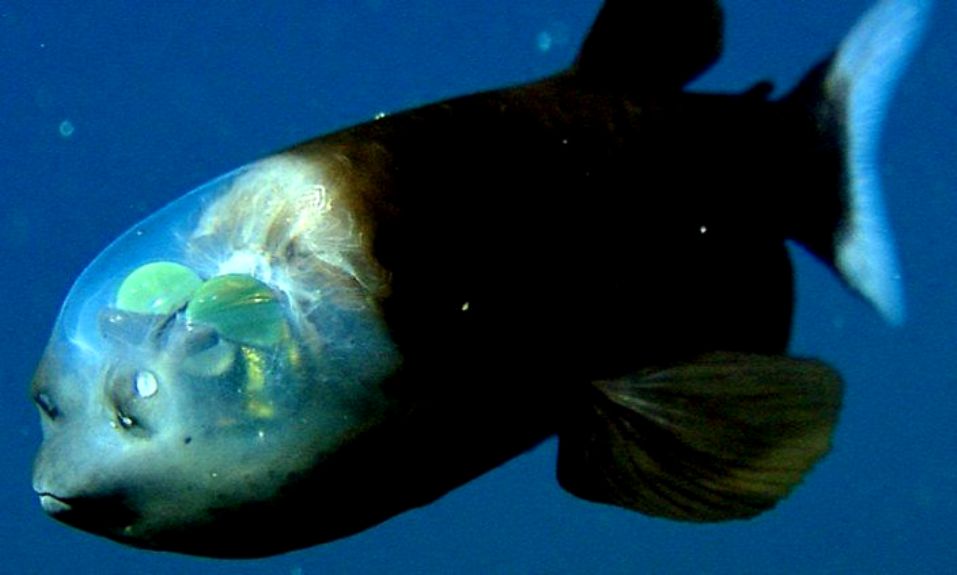
The barreleye, also known as a spook fish, has extremely light-sensitive eyes on the top of its fluid-filled head.
The barreleye was first described in 1939, but remained a mystery to scientists until 2009, when they discovered that its large, tubular eyes could actually rotate inside of its head. This rotational ability allows them to look upward for potential prey or face forward to see what it is eating.
Since barreleyes live at such depths where there is hardly any light, their tubular eyes help them use whatever faint amounts of light drift down to them. They also have two spots above their mouths which are called nares, analogous to human nostrils.
BOUGAINVILLIA SUPERCILIARIS
Bougainvillia superciliaris look like glowing, mini jellyfish.
These bioluminescent sea creatures create their own light in the darkness. They either live solitary lives or cluster in colonies, and eat through filter-feeding.
GHOST SHARK
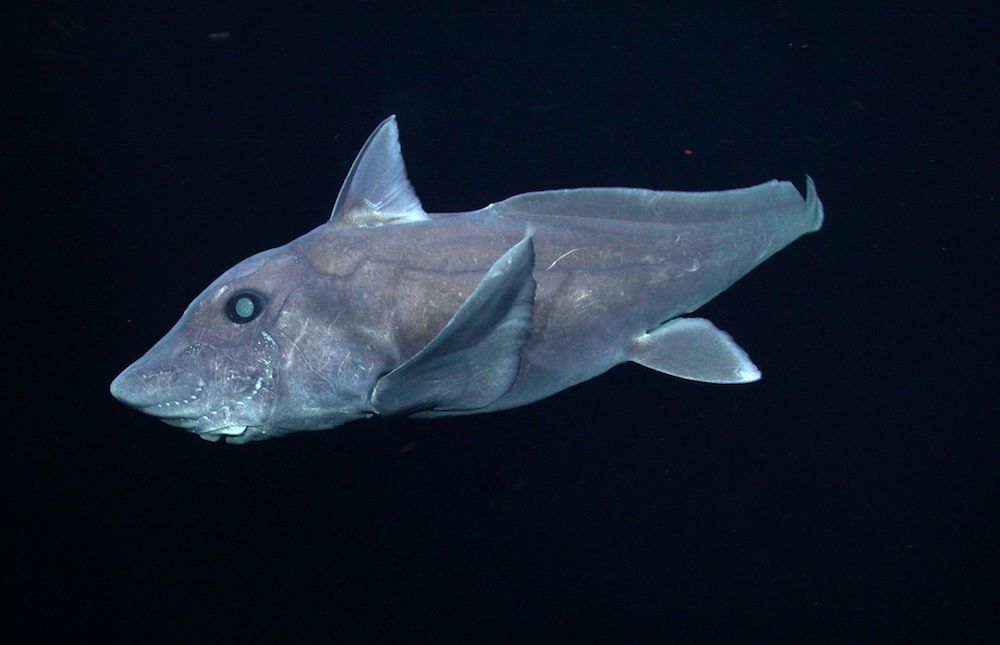
This ghoulish-looking creature is aptly named ghost shark, or chimaera.
Like sharks and rays, the ghoulish chimaera is a type of cartilaginous fish. It also bears an uncanny resemblance to Zero, the dog from "The Nightmare Before Christmas."
Inhabiting temperate to cold waters around the world, chimera live at depths of 8,200 feet or more. There are about 47 species, which range in length from 24 to 80 inches.
Archaeological evidence has proven that chimera have been around for millions of years. The earliest fossil specimen, a skull, was dated to about 280 million years ago. It was unearthed in South Africa in the 1980s.
